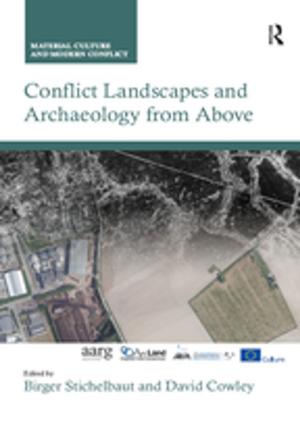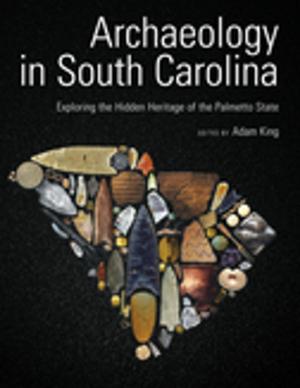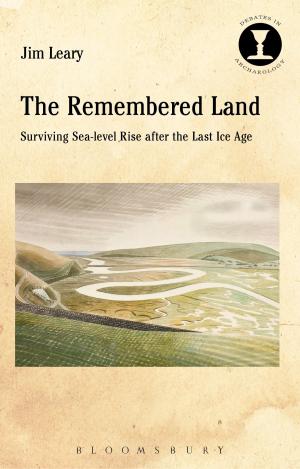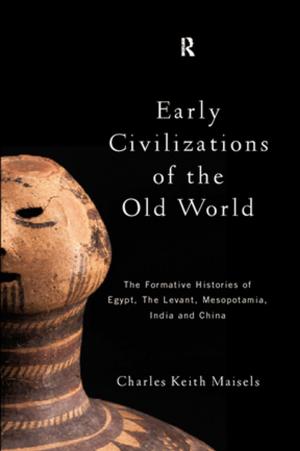The Swordfish Hunters
The History and Ecology of an Ancient American Sea People
Nonfiction, Social & Cultural Studies, Social Science, Archaeology| Author: | Bruce Bourque | ISBN: | 9781593731151 |
| Publisher: | Bunker Hill Publishing Inc | Publication: | October 17, 2012 |
| Imprint: | Bunker Hill Publishing Inc | Language: | English |
| Author: | Bruce Bourque |
| ISBN: | 9781593731151 |
| Publisher: | Bunker Hill Publishing Inc |
| Publication: | October 17, 2012 |
| Imprint: | Bunker Hill Publishing Inc |
| Language: | English |
Thousands of years ago, Maine's Red Paint People, so called because of the red ochre in their burial sites, were among the first maritime cultures in the Americas. They could have subsisted on easily caught cod, but they chose to capture dangerous and elusive swordfish. This book explains beautifully the prehistory of these people, the evolution of archaeological thinking about them, and the myriad new scientific threads that shed new light on this old culture. Anyone with even a passing interest in New England's deep maritime roots must read this book. In the closing years of the nineteenth century, strange objects began to come out of the ground in Hancock County, Maine. They were quickly recognized as prehistoric artifacts of stone, but they were very unlike the spear tips and other small artifacts collectors gathered from coastal sites as they eroded into the sea. Many were large and finely crafted, some made of beautiful stone from far-off places. Strangest of all, they came from pits filled with a brilliant red powder called red ocher. These were ancient graves clustered into large cemeteries. Local naturalists brought these finds to the attention of a new breed of scientist--archaeologists who were busy developing their new science at the Peabody Museum of American Archaeology and Ethnography at Harvard University. They began to visit and to excavate these sites and introduced them to the world in 1893 at Chicago's World's Columbian Exposition. Between then and 1920, other archaeologists became involved, searching for and discovering more than a dozen new cemeteries. Museum collections grew quickly, but so did confusion about what kind of culture could have produced these wonderful objects. Then interest in the so-called Red Paint cemeteries waned as American archaeologists began to broaden their horizons to other continents. The mystery of the Red Paint People was left hanging. A half century later, as Maine archaeology was undergoing a revival, a new generation of archaeologists, armed with the analytical tools of modern science, once again turned their attention to the Red Paint People and reached some surprising conclusions. This book tells the story of the Red Paint People and the archaeologists who have tried to understand them for over a century. Interwoven with that story is one of scientific growth and evolution, as archaeologists have adopted new research models in collaboration with a broad range of natural scientists to flesh out the life story of a remarkable prehistoric culture: the swordfish hunters. Advance Praise: Bruce Bourque's The Swordfish Hunters captivated me as no recent book has. I could not put it down. Thousands of years ago, Maine's Red Paint People were among the first maritime cultures in the Americas. They could have subsisted on easily caught cod, but they chose to capture dangerous and elusive swordfish. Bourque explains beautifully the prehistory of these people, the evolution of archaeological thinking about them, and the myriad new scientific threads that shed new light on this old culture. Anyone with even a passing interest in New England's deep maritime roots must read this book.--Robert Steneck, Professor of Marine Sciences University of Maine In The Swordfish Hunters, Bruce Bourque interweaves four narratives into a fascinating and engaging account of the distinctive Red Paint culture of ancient coastal Maine. He interweaves the history of archaeological research with his own personal history of intellectual discovery. He describes the Red Paint People in fascinating detail as a complex maritime hunter-gatherer society that hunted swordfish, and he shows, importantly, how archaeological data can contribute to modern issues and problems -- in this case to the health of marine ecosystems.--Kenneth M. Ames, Professor Emeritus of Anthropology, Portland State University, Portland, Oregon
Thousands of years ago, Maine's Red Paint People, so called because of the red ochre in their burial sites, were among the first maritime cultures in the Americas. They could have subsisted on easily caught cod, but they chose to capture dangerous and elusive swordfish. This book explains beautifully the prehistory of these people, the evolution of archaeological thinking about them, and the myriad new scientific threads that shed new light on this old culture. Anyone with even a passing interest in New England's deep maritime roots must read this book. In the closing years of the nineteenth century, strange objects began to come out of the ground in Hancock County, Maine. They were quickly recognized as prehistoric artifacts of stone, but they were very unlike the spear tips and other small artifacts collectors gathered from coastal sites as they eroded into the sea. Many were large and finely crafted, some made of beautiful stone from far-off places. Strangest of all, they came from pits filled with a brilliant red powder called red ocher. These were ancient graves clustered into large cemeteries. Local naturalists brought these finds to the attention of a new breed of scientist--archaeologists who were busy developing their new science at the Peabody Museum of American Archaeology and Ethnography at Harvard University. They began to visit and to excavate these sites and introduced them to the world in 1893 at Chicago's World's Columbian Exposition. Between then and 1920, other archaeologists became involved, searching for and discovering more than a dozen new cemeteries. Museum collections grew quickly, but so did confusion about what kind of culture could have produced these wonderful objects. Then interest in the so-called Red Paint cemeteries waned as American archaeologists began to broaden their horizons to other continents. The mystery of the Red Paint People was left hanging. A half century later, as Maine archaeology was undergoing a revival, a new generation of archaeologists, armed with the analytical tools of modern science, once again turned their attention to the Red Paint People and reached some surprising conclusions. This book tells the story of the Red Paint People and the archaeologists who have tried to understand them for over a century. Interwoven with that story is one of scientific growth and evolution, as archaeologists have adopted new research models in collaboration with a broad range of natural scientists to flesh out the life story of a remarkable prehistoric culture: the swordfish hunters. Advance Praise: Bruce Bourque's The Swordfish Hunters captivated me as no recent book has. I could not put it down. Thousands of years ago, Maine's Red Paint People were among the first maritime cultures in the Americas. They could have subsisted on easily caught cod, but they chose to capture dangerous and elusive swordfish. Bourque explains beautifully the prehistory of these people, the evolution of archaeological thinking about them, and the myriad new scientific threads that shed new light on this old culture. Anyone with even a passing interest in New England's deep maritime roots must read this book.--Robert Steneck, Professor of Marine Sciences University of Maine In The Swordfish Hunters, Bruce Bourque interweaves four narratives into a fascinating and engaging account of the distinctive Red Paint culture of ancient coastal Maine. He interweaves the history of archaeological research with his own personal history of intellectual discovery. He describes the Red Paint People in fascinating detail as a complex maritime hunter-gatherer society that hunted swordfish, and he shows, importantly, how archaeological data can contribute to modern issues and problems -- in this case to the health of marine ecosystems.--Kenneth M. Ames, Professor Emeritus of Anthropology, Portland State University, Portland, Oregon















